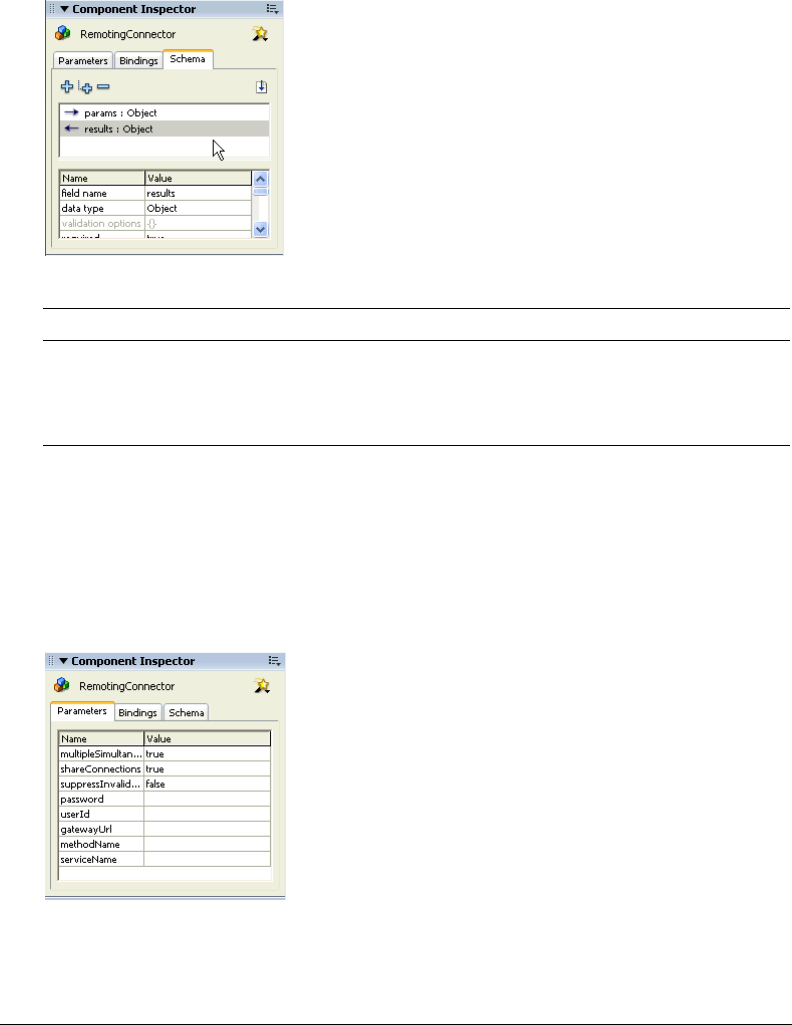User Guide
Table Of Contents
- Contents
- About Flash Remoting
- Getting Started
- Using Flash Remoting ActionScript
- Using the RemotingConnector component (Flash Professional only)
- Using Flash Remoting Data in ActionScript
- About Flash Remoting and data types
- Understanding Action Message Format
- Converting from ActionScript to application server data types
- Converting from application server data types to ActionScript
- ColdFusion to ActionScript data conversion issues
- About working with objects
- About working with RecordSet objects
- About working with XML
- The NetConnection Debugger
- Using Flash Remoting with ColdFusion MX
- Using Flash Remoting for Java
- About Flash Remoting for Java
- Calling Java classes or JavaBeans from ActionScript
- Calling Enterprise JavaBeans (EJBs) from Flash
- Calling servlets and JSPs from Flash
- Calling JMX MBeans from Flash (JRun only)
- Calling server-side ActionScript from Flash (JRun only)
- Handling function results in ActionScript
- Using Flash Remoting with JRun security
- Passing XML objects between Flash and Java
- Viewing Flash Remoting log entries
- Using Flash Remoting for Microsoft .NET
- Flash Remoting for Microsoft .NET
- Calling ASP.NET pages from Flash
- Making an ASP.NET page available to Flash Remoting
- Getting a reference to an ASPX-based service in ActionScript
- Invoking ASPX pages in ActionScript
- Using the Flash Remoting custom server control in ASPX pages
- Using the Flash Remoting namespace in code-behind files
- Using ASP.NET state management with Flash Remoting
- Using ASP.NET exception handling
- Using ADO.NET objects with Flash Remoting
- Displaying a RecordSet object in Flash with ActionScript
- Calling web services from Flash
- Calling ASP.NET assemblies from Flash
- Viewing Flash Remoting log entries
- Using NetServices and Connection Classes
- Index

54 Chapter 3: Using the RemotingConnector component (Flash Professional only)
Flash Remoting uses the schema of a RemotingConnector component to specify the
characteristics of both the parameters that a remote service function requires and the results that it
returns. You specify the schema values on the Schema tab of the Component inspector for the
RemotingConnector component, as shown in the following example.
You can set the following schema properties in the Schema tab:
Once you have defined the schema, you can bind the items to a variety of UI controls to provide
values for the parameters or to display the results of the web service. For more information, see
“Working with schemas in the Schema tab (Flash Professional only)” in Using Flash Help.
RemotingConnector parameters
For each RemotingConnector component instance, you set parameters in the Parameters tab of
the Component inspector, as shown in the following example.
Property Name Description
params A property that holds the parameters that are sent to the specified method.
You create schema fields under this property and bind them to properties
to set parameter values.
results A property that holds the results returned by the service function.










